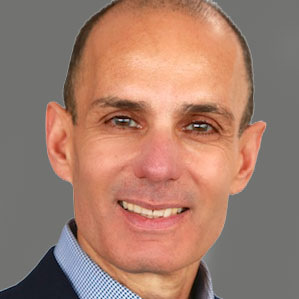Are you leading with power or force?
In my work with organizations, I meet many effective managers and executives who have a wide variety of leadership styles and personalities.
Some drive progress in a proactive way and others are more reactive. Some make things happen directly, while others talk a good game but only play it through others. Some are self-centered and selfish in their pursuit of results, while others are generous and kind. Some promote politics and fear around them when they get things done, while others get results by inspiring and motivating others to do their best.
When it comes to driving results and making things happen there is a difference between leaders who lead with force and those who lead with power.
Take for example the following three leaders (real stories, fictional names):
- George was a very tough and rough (prickly) leader. However, he was a very effective one too. He drove his team hard, but because he himself worked even harder, and also because he sincerely cared about his people, he had a very strong level of loyalty and trust in his organization. However, when it came to interacting with other groups the picture was not as pretty. He cared about the company, not just his own area, but when it came to navigating through internal corporate politics, he lacked patience and finesse, therefore he had a tendency to behave like a bull in a china shop. He was abrupt and often instructed his people to do things that affected their colleagues, without coordination or communication. There was no middle ground with George, people either loved him or hated him, but, everyone feared him.
- Diane was one of the most senior female leader in her organization, which made things more challenging for her. Even though her role required a close interaction with the CEO, and she probably had his ear more than some of her peers, she always felt a bit of an outsider in the senior management team. She was effective in achieving results. However, perhaps because she felt disrespected or inferior she had a tendency to wave her title around and assert her authority whenever she needed to get things done. Needless to say, this rubbed people the wrong way, which only hurt her respect in the wider organization. Her own team members felt embarrassed by and frustrated by her behavior and reputation. But, because they didn’t trust her enough they didn’t feel comfortable telling her how they felt.
- In contrast with George and Diane, everyone respected and trusted Michael in his company. This was a good thing as he had a cross-functional role that affected everyone. Even though he had a higher rank in his company then George and Diane did in theirs, he didn’t seem to care much about status. He did care, however about driving collaboration and results. In fact, he was passionate and adamant about it, and everyone knew it. He wasn’t afraid to compel, even demand of people to communicate and collaborate for the good of the whole. While he frequently pushed people way beyond their comfort level, no one seemed to take it personally or be threatened by him. In fact, even people who didn’t report to him listened to him and allowed him to informally guide and coach their views and behaviors. In many cases, he made a bigger difference in motivating and inspiring employees and managers than their direct bosses.
As a leader, you can be effective and get the job done in many different styles and approaches. However, there are different consequences to different styles.
Leaders who use force or authority may achieve the results they want. In fact, they may even get things done quicker than those who don’t. However, they often leave behind them a wake of corporate casualties, including colleagues who feel upset, left out, used, taken advantage of, disrespected and/or demeaned.
Leaders who use force or authority also tend to have a negative reputation in the organization. They typically say all the right corporate slogans, however, people don’t see them as authentic. In fact, they tend to be viewed as political, agenda driven and self-serving. People avoid partnering with them, and because team members usually fear them, there tends to be a lot of gossip about them but not a lot of open, honest and direct communication and feedback with them.
In contrast, leaders who use power inspire trust, loyalty, and collaboration. They may go slower and take more time to achieve the results. However, they do so in order to include and align all the key stakeholders, and at the end of the day not only did they achieve the outcomes, but they have built a strong and authentic coalition of committed team members who fully own the future.
Leaders who use power don’t care about organizational borders and silos. They also don’t care about status. They truly wear two equal hats every day – the responsibility for their own organization, as well as the greater good of the whole. And, they are not afraid to hold their colleagues to account, communicate openly and honestly and volunteer for greater corporate assignments beyond their day job. Their personal commitment, example, and courage inspire others throughout the organization to do the same.
What type of a leader are you?





Leave a Reply
Want to join the discussion?Feel free to contribute!